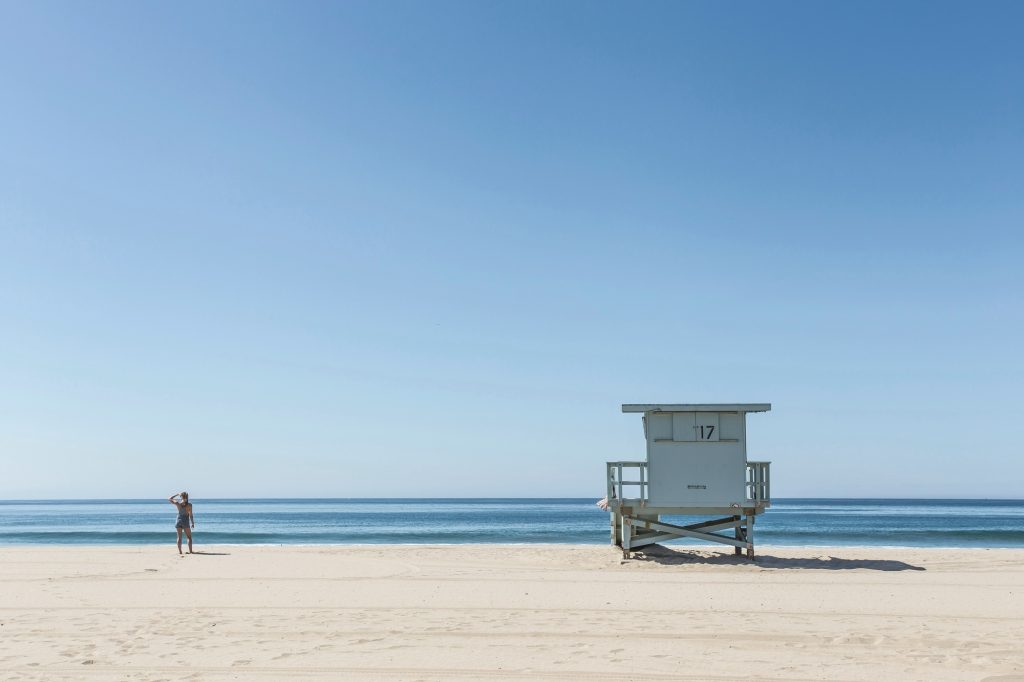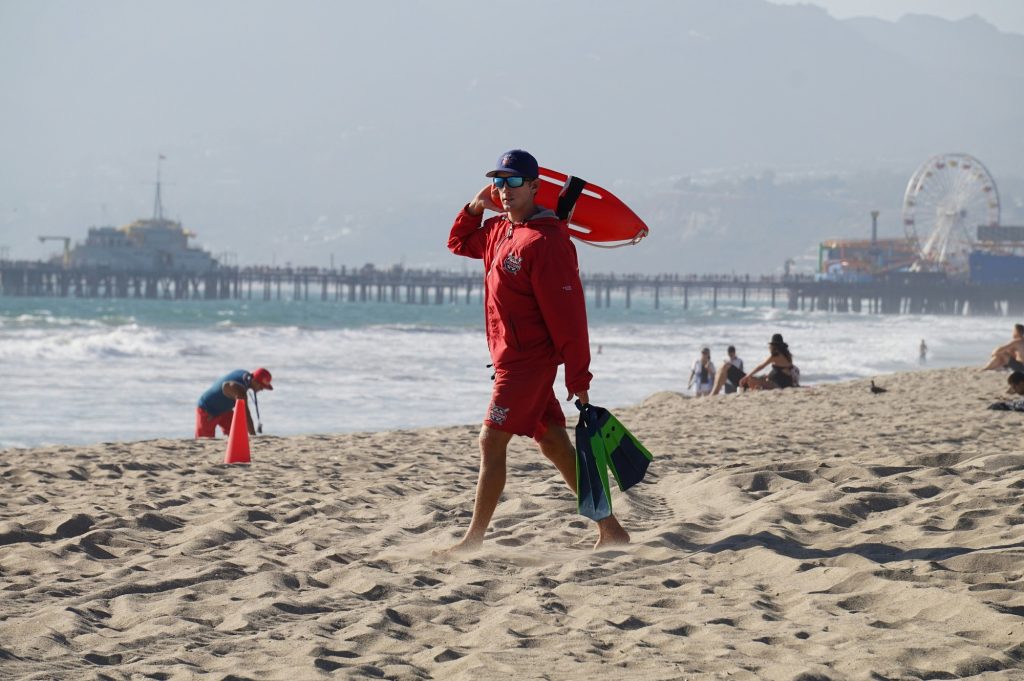
A beach day is supposed to be relaxing—sunshine, waves, and maybe a cold drink in hand. But while you’re busy enjoying the moment, lifeguards are scanning the water with sharp eyes and split-second instincts, often wishing the public knew just how dangerous the beach can become in an instant.
Whether you’re a parent bringing kids to splash in the surf or an adult looking to unwind, knowing these often-overlooked beach safety tips could save your day or even a life.
The Ocean Isn’t a Pool. Respect the Current
To a child (or even many adults), the ocean may look just like a bigger, saltier pool. But water safety at the beach is a whole different game.
Rip currents, which can sweep even strong swimmers far from shore in seconds, are the number one reason lifeguards perform rescues. Most people don’t recognize one until they’re stuck in it—and by then, panic sets in.
Lifeguard tip: If you’re caught in a rip current, don’t fight it. Instead, swim parallel to the shore until you’re out of the current, then make your way back to land. Better yet, always swim in designated areas where lifeguards are watching.
Sunscreen Isn’t Optional Or One and Done
While you may remember to slather on sunscreen in the morning, most beachgoers forget to reapply, especially after swimming or sweating. That false sense of protection can lead to painful burns, heat exhaustion, and even long-term skin damage.
Lifeguard tip: Apply sunscreen 15–30 minutes before sun exposure, then reapply every two hours—or immediately after swimming or towel-drying. Don’t forget areas like your ears, tops of feet, and the back of your neck.
Watch for Flags. They’re Not Just for Decoration
Those colored flags waving at the edge of the lifeguard tower aren’t for show. They’re vital signals. Each color indicates ocean conditions, potential hazards, or restricted areas.
Lifeguard tip: Before you even set up your umbrella, check the flag color and ask the lifeguard what it means. If you’re unsure, assume caution. Many beach emergencies happen because visitors don’t realize they are entering dangerous water.
Stay Sober. Yes, Even at the Beach
It’s tempting to crack open a cold drink on a hot day, but alcohol and ocean swimming don’t mix. It impairs your judgment, reaction time, and coordination, all of which you need if something goes wrong in the water.
Lifeguard tip: Alcohol is a common factor in adult drownings. If you plan to drink, skip the swimming. Save the ocean dip for earlier in the day when you’re fully alert and sober.

Don’t Assume Lifeguards See Everything
Lifeguards are trained professionals, but they’re human. They monitor wide stretches of beach, often in crowded and chaotic conditions. They can’t have eyes on every child, swimmer, or beachgoer at all times.
Lifeguard tip: Always keep your own eyes on your children, even if lifeguards are present. Designate a “water watcher” among the adults in your group—someone who isn’t distracted by their phone or reading material.
Teach Kids That “Waves Are Stronger Than They Look”
Many injuries happen in shallow water, not deep surf. Small waves can knock over children or adults and cause injuries from tumbling into the sand, rocks, or shells.
Lifeguard tip: Supervise kids even at the shoreline. Encourage them to face the waves and keep a low center of gravity if they’re wading. Never let young children turn their backs to incoming waves.
Protect Your Feet
While soft sand is part of the beach’s charm, it can hide dangers beneath the surface, like sharp shells, broken glass, jellyfish, or even hot coals from a beach fire.
Lifeguard tip: Encourage kids and adults to wear water shoes when walking along unfamiliar areas. And remind everyone to shuffle their feet in the water to avoid stepping on stingrays or other hidden marine life.
Hydration Matters More Than You Think
With all the swimming and sunbathing, it’s easy to forget to hydrate. But a combination of sun, salt, and sweat can quickly dehydrate your body, especially in kids.
Lifeguard tip: Pack plenty of water and encourage regular sips throughout the day. If someone complains of dizziness, nausea, or fatigue, get them to shade, rehydrate, and cool down immediately.
Check the Weather and the Tide
It’s easy to assume every beach day will be sunny and calm, but weather and tides can change fast. Strong winds, lightning, and high tides can create dangerous conditions within minutes.
Lifeguard tip: Always check the local forecast and tide schedule before heading out. If thunderstorms are in the area, get off the beach immediately. Water is a conductor of electricity. One lightning strike could be deadly.
Beach Days Should Be Fun, But Safety Comes First
Lifeguards love seeing families enjoy the beach. They’re not there to ruin the fun. They’re there to help keep it safe. Knowing and respecting a few essential rules can mean the difference between a joyful day at the shore and a trip to the emergency room.
These aren’t scare tactics. They’re lifesaving reminders from the people who’ve seen the worst happen and work hard every day to prevent it.
What’s one beach safety rule you always follow? Have you ever had a beach day turn dangerous?
Read More:
Drowning Prevention Tips For Parents With Young Children
Why Sunscreen Isn’t Enough: Total Summer Protection Tips
Riley is an Arizona native with over nine years of writing experience. From personal finance to travel to digital marketing to pop culture, she’s written about everything under the sun. When she’s not writing, she’s spending her time outside, reading, or cuddling with her two corgis.
Leave a Reply